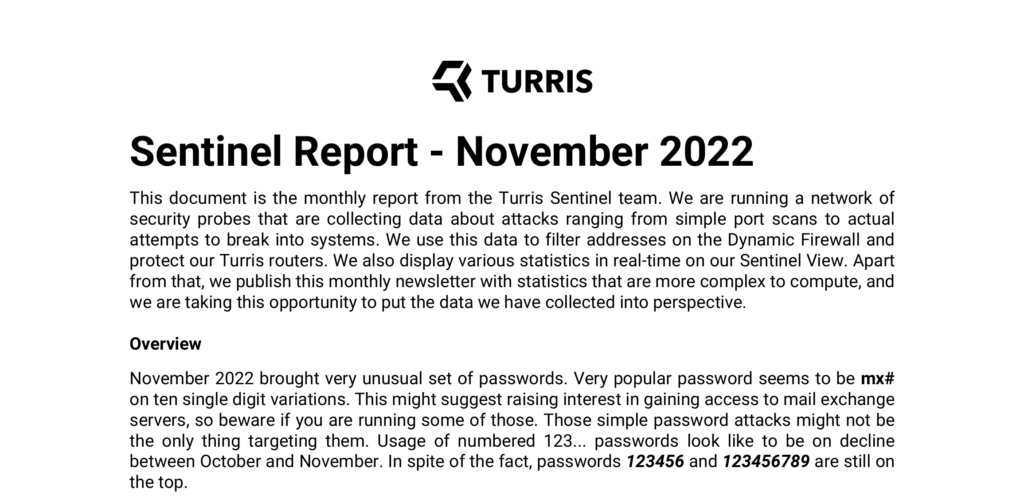Minipot attacks decreased by nearly a half from the preceding month in August. The subnet 46.148.40.0/24 members were not so active last month, and we can see addresses from other countries emerging at the top of the table. Notable mentions go to some European countries, namely Germany and Romania, who got back into the spotlight.
Sentinel View report – July 2023
Number of individual attackers had risen and minipot attacks doubled. Last month only three of the top attackers emerged from subnet 46.148.40.0/24, yet this month the majority of all attackers came from this Iraq subnet.
Sentinel View report – June 2023
The total number incidents decreased by half. However, there are only slightly fewer than 10,000 distinct attackers on the greylist. The last month’s seemingly minor reduction may have been indicative of an ongoing decline.
Sentinel View report – May 2023
The overall count for total incidents dropped by 100 million. Sounds like a lot, but given the number of attacks we recorded (1.6 billion), it is just less than 10% decrease. Still significant, but not as shocking as hundred millions sounds. The results for minipot traps have not changed significantly from previous month, it seems the attackers are pretty consistent in regards to what services interest them the most.
Sentinel View report – April 2023
Moving to April, we gained almost ten thousand more unique attackers on average, according to the Greylist. To provide even more context to the events, we added yet another interesting figure — the number of total incidents recorded.
Sentinel View report – March 2023
Looking at Greylist and Incidents Statistics, March data seem to be quite stable in comparison with the previous month. The total count of incidents did not drop significantly from February as the difference is about 100k incidents. The total number of incidents in February, divided by the number of days in the month and then multiplied by 30.36 (average number of days in a month) is 20,543,356.40. For March, using the same rules, we get 20,461,799.03.
Sentinel report
Why we improve e-mail security and why it may break message redirection
In the Turris project, we are currently improving e-mail communication security. If you use our infrastructure for sending notifications from Turris devices, it also applies to you. It strengthens your protection but may “break” the redirection of messages to another address.
Fun we had at AT&T hackathon
At the end of November last year awesome crew from AT&T organized a hackathon about various aspects of smart technology. They have a long tradition in organizing those and they are really good at it. We spoke at various conferences with them and they asked us whether we would be interested in joining as we have interesting hardware to lend contestants and also developers skilled in various areas that could help the attendees to overcome various issues. We jumped on board right a way!
Digital Footprint: on-line course for children in the Czech Republic
In September this year, the Czech Safer Internet Centre (CZ.NIC), in cooperation with the National Cyber and Information Security Authority, presented an online course called Digital Footprint, intended primarily for children aged 10-13. This interactive game focuses on Internet privacy and associated socio-pathological phenomena such as personal data abuse, sexting, digital privacy or cyberbullying.






